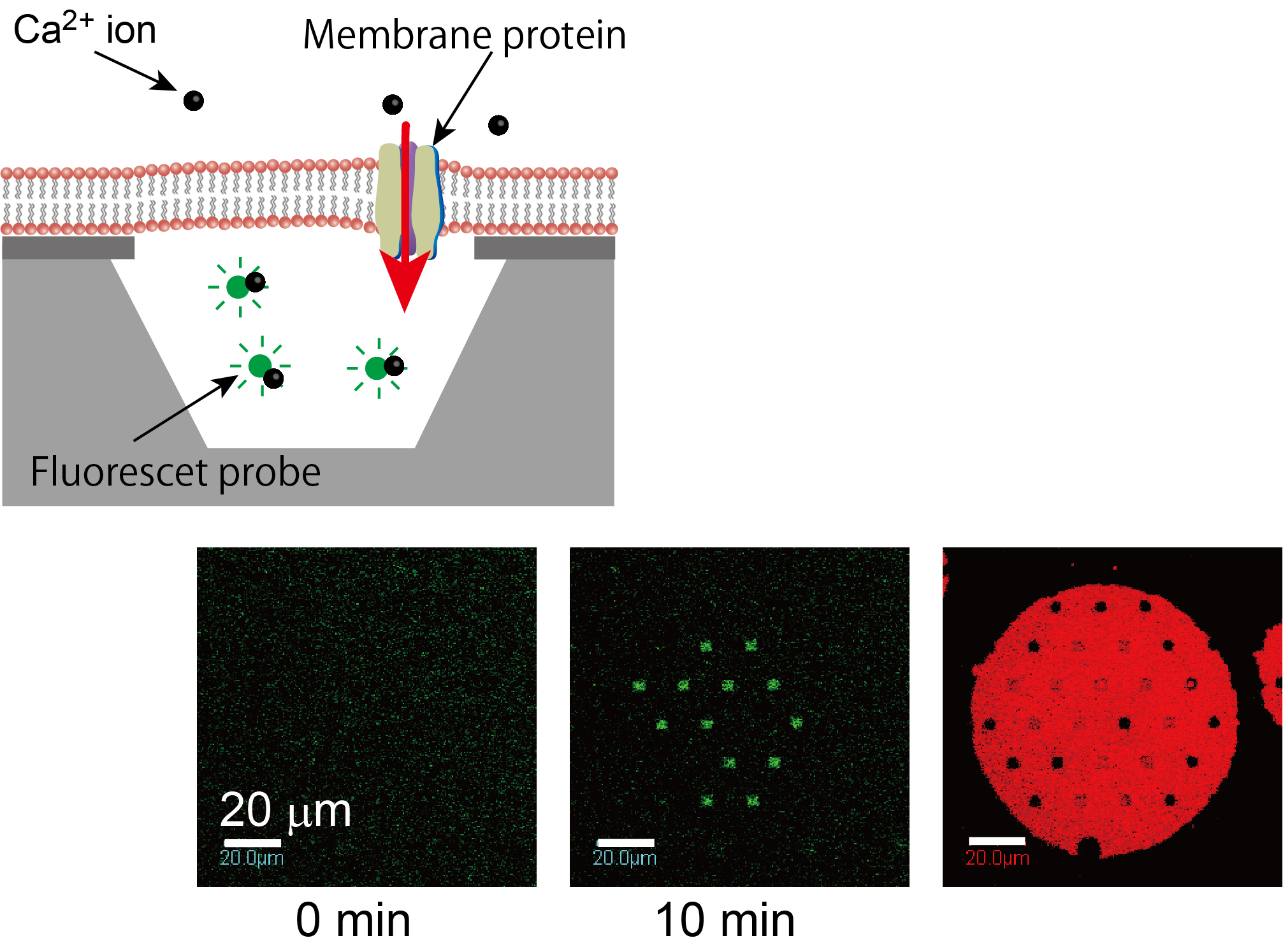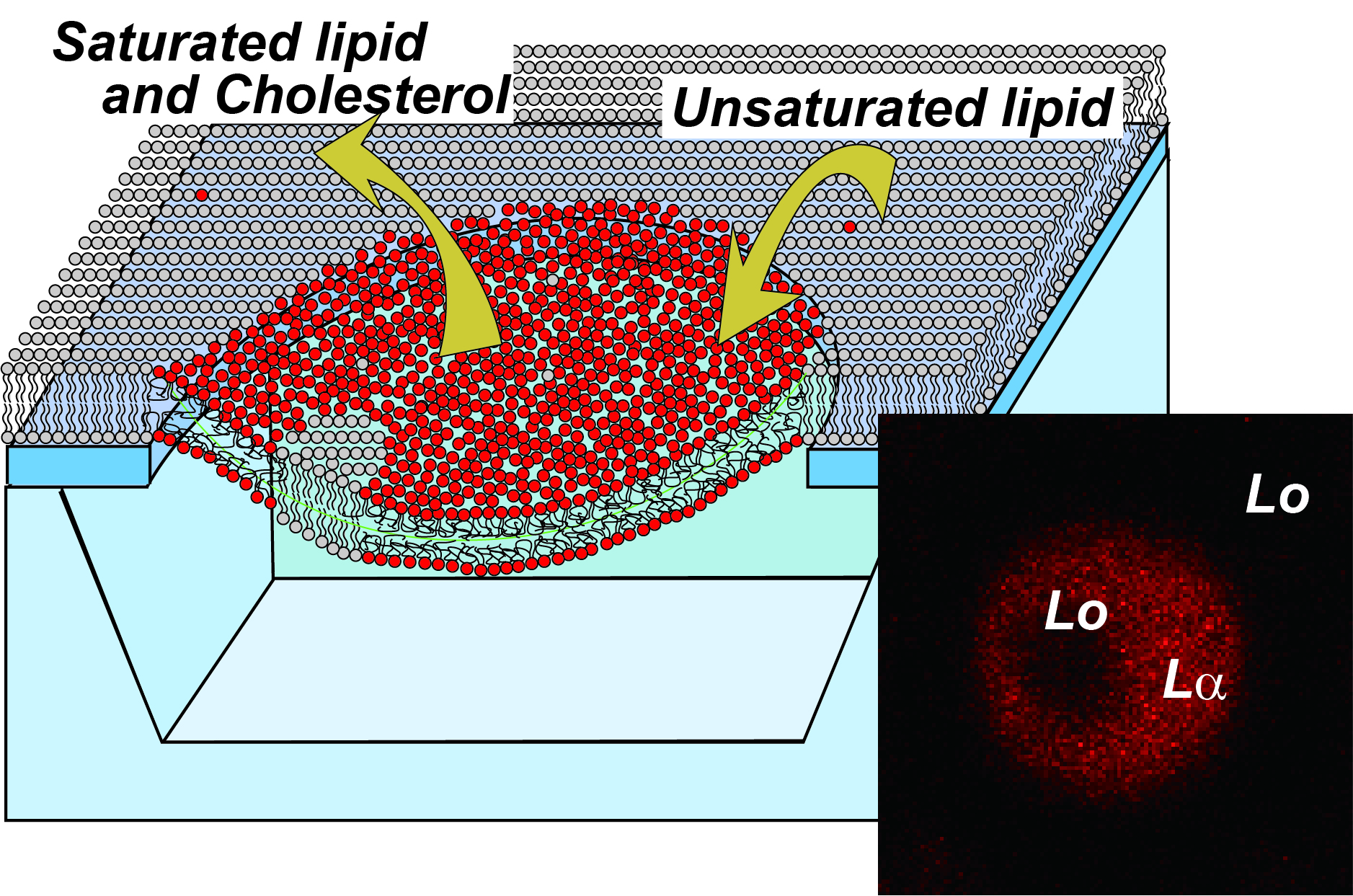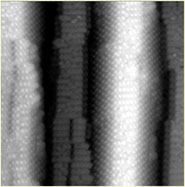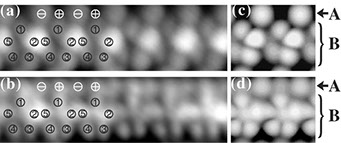

Nanobiodevice that consists of an artificial lipid membrane and membrane proteins
The combination of biological systems and semiconductor nanotechnology offers great potential for device applications, such as high throughput and highly sensitive bio-sensors. We are developing a nanobiodevice that consists of artificial lipid membranes containing functional membrane proteins: the membrane is suspended over a microcavity which contains “cytoplasmic” fluid. We have succeeded in fabricating a microcavity array sealed with a lipid bilayer on a Si substrate for analyzing ion channel activity. Our nanobiodevice will help us to understand the function of the membrane proteins. It will also be a promising platform for controlling artificial synaptic connection and analyzing biological signal transduction. We aim to establish a fundamental technology that also contributes to the health and medical applications, such as high-throughput screening for drug discovery and early diagnosis of disease.

The Ca2+ ion indicator fluo-4 was confined in the microwells. Then, to analyze the Ca2+ ion transport through the ion channels, a difference was established between the Ca2+ ion concentrations of the microwells and the outer solution by adding CaCl2 to the outer solution until its concentration reached 1 mM. When α-hemolysin was added to the outer solution, it diffused to the suspended lipid bilayer and formed the ion channels. The Ca2+ ions were transported from the outer solution to inside the microwells through the ion channels and the fluorescence intensity of fluo-4 in the microwells increased. The microwell volume was very small (1~100 femtoliters), so a highly sensitive monitor could be realized.
Ref: Biosensors and Bioelectronics 31, 445 (2012).

The localization of liquid-ordered (Lo) and liquid-crystalline (Lα) phase domains on a silicon substrate with a microwell array is investigated.
Although the phase separation of the Lo and Lα phases on both a giant unilamellar vesicle (GUV) and a supported membrane remains stable for a long time, the lateral diffusion of lipids across each domain boundary occurs quickly.
Since the phase separation and domain arrangement are governed by the stiffness and lateral tension of the lipid membrane, the phase separation is rearranged on a micropatterned substrate.
Similar phase separation of the Lo and Lα phases is observed at a lipid membrane suspended over a microwell.
However, the Lα phase is preferred at a suspended membrane, and saturated lipids and cholesterol are excluded towards the supporting membrane on the periphery.
Since the Lo domain area is reduced by anisotropic diffusion through the boundary between the suspended and supported membranes, a very slow reduction rate with a linear functional relation is observed.
Finally, a localized Lα phase domain is observed at a membrane suspended over a microwell, which is surrounded by an L
Ref: Langmuir 33, 13277 (2017).
Previous research topics
Formation control and characterization of semiconductor nanostructures
By using surface sensitive analysis techniques, such as medium-energy ion scattering (MEIS) with H+ or He+ ion beam (~ 100 keV), scanning tunneling microscopy (STM), and atomic force microscopy (AFM), I studied formation mechanism of nanostructures on Si/Ge system. Especially, interdiffusion between Ge and Si, strain relaxation caused by lattice mismatch, surface reconstruction and superstructures was investigated.

We have investigated the strain state in Ge nanowires on Si(113) substrate using MEIS. We found that nanowires have negligibly relaxed compressive strain along their length, but the strain across them is almost totally relaxed. Anisotropic strain relaxation plays a role in determining the width of the nanowires.
Ref: Physical Review B 67, 035319 (2003).

Based on STM observations of the epitaxial growth of Ge on Si(113) and first-principles total energy and band calculations, we proposed new reconstruction model for the Ge/Si(113)-2x2 surface. We believe that such unique surface reconstruction resulting in anisotropic surface strain can play a crucial role in deciding the nature of growth on these high-index surfaces.
Ref: Physical Review Letters 88, 266101 (2002).
Continuous monitoring of bioelectrical signals by sensing fabrics
The continuous, long-term recording of bioelectrical signals is required in the medical field in order to reduce the health risks. Wearable electrode is a promising way to monitor in daily life. For the wearable electrode, the new sensing fabric was developed by coating nanofiber with a conductive polymer. It is flexible, biocompatible, durable and workable and so allows stable recording equivalent to that of a conventional electrode without the need for electrolyte paste.